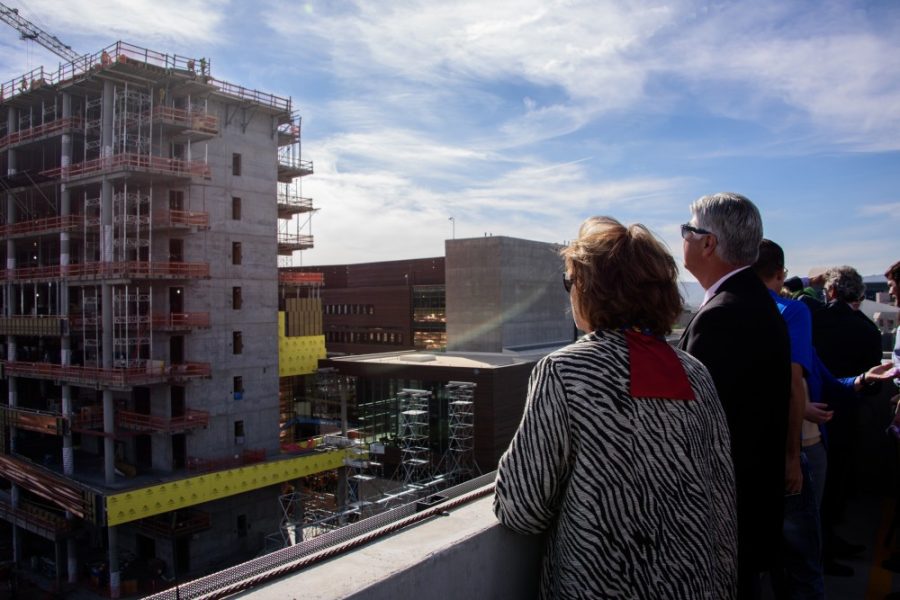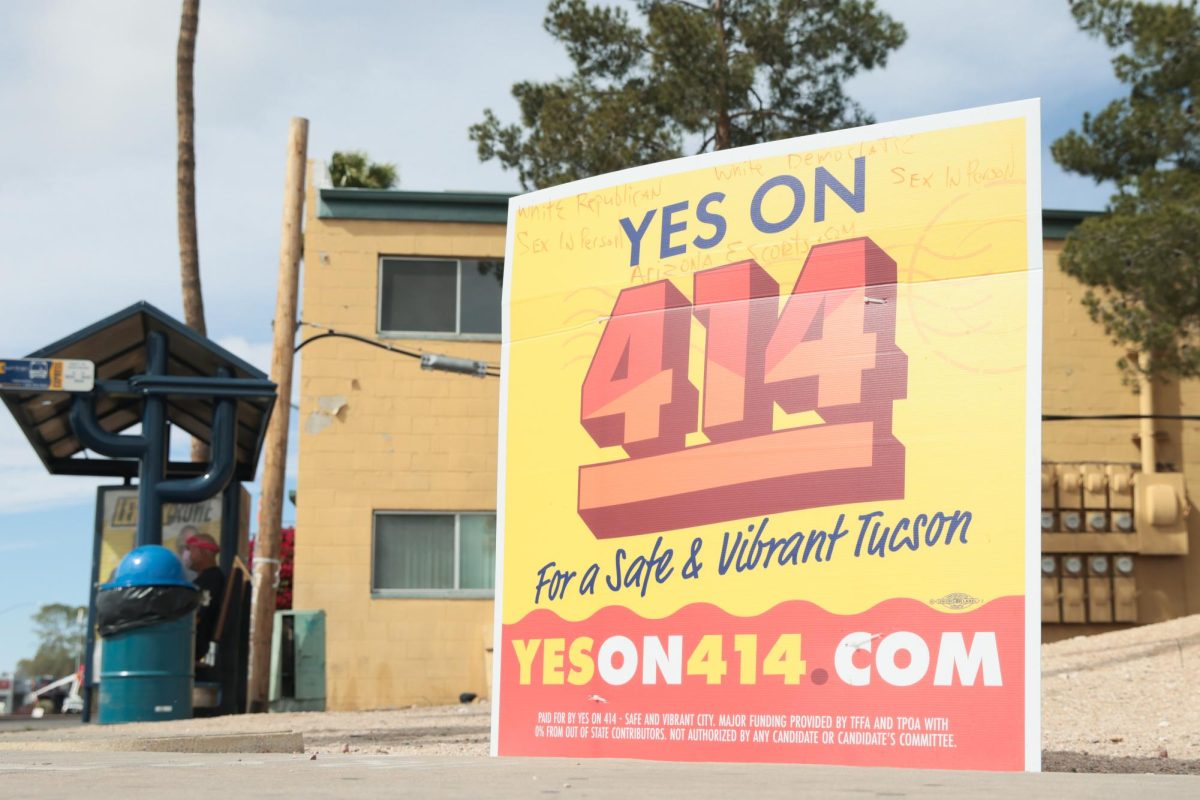The UA took one step closer to opening its Biomedical Partnership Building at the College of Medicine in Phoenix earlier this month.
The final beam of the building was put into place on March 3. At least 150 people attended a ceremony celebrating the construction milestone that day, including UA President Ann Weaver Hart and Phoenix Mayor Greg Stanton.
Upon its completion, the new building will have 245,000 square feet of free space and is set to feature two 80-seat seminar rooms and 10 floors. The Biomedical Partnership Building is also projected to create 360 permanent jobs.
When the building opens early next year, it will serve as the new headquarters for the UA Center for Applied Nanoscience and Biomedicine. Director of the center and UA professor of basic medical sciences and radiation oncology, Frederic Zenhausern, is very excited about his program’s new home.
“The Center for Applied Nanoscience and Biomedicine is really developing medical technology for the future in terms of molecular diagnostics [and] precision health, and we use all kinds of different technological platforms to do so,” Zenhaursern said. “This building will help the center bring together nanotechnology, engineering and molecular biology.”
Researchers at the Center for Applied Nanoscience and Biomedicine have made great strides in medical advancements. Those who work at the center have backgrounds in physics, material science, electrical and mechanical engineering, chemistry, biology, and nanotechnology.
“We have many different projects we’re working on. This is due to the interdisciplinary nature of the center,” Zenhaursern said.
Marian Frank, the associate director of Public Affairs and the senior vice president of Health Sciences at the UA Phoenix campus said people at the Biomedical Partnership Building are working toward hiring researchers from other parts of the state. She said that everyone is expected to be in the new building by early 2017.
“We currently have the building where we have some of our researchers working with researchers from Arizona State [University],” Frank said. “Some of our researchers at the building will be moving into the Biomedical Partnership Building.”
The $136 million for the building was funded by the Arizona Board of Regents. The board approved the UA’s request for the building in 2014, using the Stimulus Plan for Economic and Educational Development bonds approved by the Arizona legislature in 2008. Over the years, the UA has put over $450 million into development projects for its downtown Phoenix Biosciences campus.
Other changes at the UA Phoenix campus are expected to happen soon. Last June, the City of Phoenix approved the UA’s proposal to expand on up to five acres of land, including a facility that will be built in partnership with Banner Health.
Follow Nicholas Johnson on Twitter.








